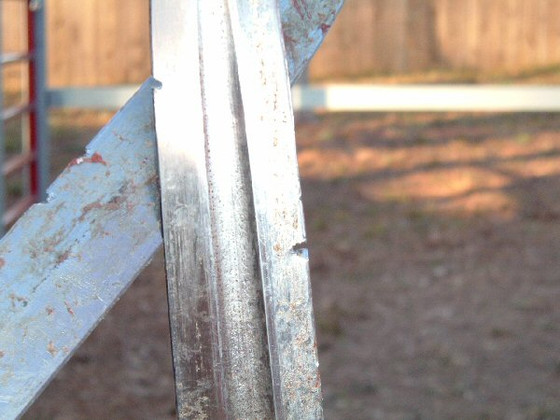Ways You Can Tell If Your Sword's Blade Is Dull
Posted by Sword N Armory on Feb 10th 2020
Whether you're wielding a knight’s broadsword, katana, or a saber, having a dull blade simply defeats the purpose. Therefore, it's necessary that you know all the ways to spot if your sword'sblade is beginning to dull. Once you’ve identified the cause of the problem you can work toward re-sharpening your blade to the razor-sharp edge it deserves.
There are many ways to tell if your sword's blade is beginning to dull, and the first way you may notice this is by monitoring its performance. Does the blade cut slower, and require more energy than it used to? Does your sword become lodged in objects mid-cut, when it used to swipe clean through them? This may be the first sign that your blade is growing blunt. But one way to determine whether this is actually dullness, rather than the variability of human performance, is to conduct a paper test.
Simply hold a piece of paper out in front of you with one hand, and while gripping the hilt of your sword with the other, attempt to push the blade through the paper. It is very important that you push the blade down, as opposed to slicing it. Take turns pushing different sections of the blade through the paper. Does it cut unevenly? Or does it cut for a few inches before the paper begins to tear? Anything but a clean cut straight through the paper indicates that your blade has lost some of its edge.
Another way to tell if your blade has become dull is to conduct a touch test. Run your fingers along - never down - the edge of your sword. You may feel that the edge has become chipped, or that the metal is pitted in certain areas. This type of damage is often the result of cutting hard or abrasive materials, which have simply taken their toll on the blade over time. It's also important that you examine both sides of the steel, as there is another type of dulling known as a rolled edge - think of an ocean wave slowly beginning to curl over - which can be the result of an improper sharpening session.
However, there are a few types of dulling damage that cannot be detected by touch alone, so be sure to carefully examine your blade under a bright light. Can you spot any corrosion or discoloration? If your sword was formed from a high carbon steel, a slight discoloration may be normal, but anything worse may require a chemical treatment.
Be sure to hold the sword's edge directly up to the light as well. Does the edge reflect the light back? This may be the result of a flattened edge, which would be totally undetectable by touch, since the affected area is one that you certainly should not run your fingers along.
Fortunately, there are many ways to restore the sharpness of your blade, and one of the most effective ways is to utilize a set of Japanese water stones.
Begin by soaking the course, medium and fine stones in water for about ten minutes while you clean any oil off of the blade. Position the blade’s edge on the course stone, starting at the hilt. It's wise to break your sword into manageable sections, as each area of the blade should be worked across each stone for about one hundred strokes. This process requires patience and careful attention to detail, as any miscalculations in the angle could result in a loss of geometry in the blade, leading to an ineffective sword.
Knowing the signs that your blade is beginning to dull is a vital part of owning and wielding a sword. If you're unsure of how much your blade has dulled, or are hesitant about sharpening it yourself, you should consult a sword specialist to better preserve the quality of your blade.












